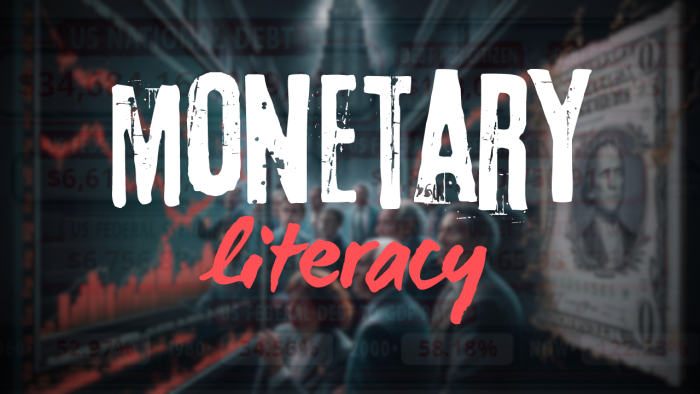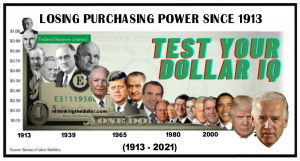Monetary literacy is the knowledge and understanding of how financial policies, particularly those implemented by governments and central banks, affect personal finance, economic freedom, and individual wealth. It involves grasping the nuances of financial repression—a set of tools used by authorities to channel funds to themselves in a manner that is often disadvantageous to the public.
Key components of monetary literacy include:
- Understanding financial repression: Recognizing how policies like below-market interest rates, government borrowing, and capital controls are used to influence the economy and reduce government debt burdens at the expense of savers and investors.
- Critical analysis of economic policies: Evaluating the short and long-term effects of monetary and fiscal policies on personal wealth and overall economic stability. This includes understanding how inflation, artificially low interest rates, and high government spending affect personal financial health.
- Inflation awareness and management: Knowing how inflation erodes purchasing power and affects savings. Developing strategies to protect savings and investments from the negative impacts of high inflation, which is often a byproduct of financial repression.
- Investment strategies under repression: Identifying and leveraging investment opportunities that are less sensitive to governmental financial controls and economic manipulation, such as certain types of real estate, commodities, and foreign assets.
- Advocacy and informed voting: Understanding the importance of economic policies in voting decisions and advocating for policies that minimize financial repression. Engaging in or supporting movements that push for greater transparency and fairness in financial regulation.
Achieving monetary literacy is crucial for safeguarding personal assets and navigating an environment where financial policies may not always align with individual financial well-being. It empowers individuals to make informed decisions that go beyond basic financial management, preparing them to mitigate the effects of restrictive economic measures and maintain financial independence.
Financial Repression: How It’s Silently Strangling Savings
Can you afford to ignore the silent war against your savings? The lack of monetary literacy is no longer just concerning; it’s become a dire threat to economic stability and personal financial health.
The concept of financial repression, a clandestine form of wealth confiscation, is crucial yet widely misunderstood. When authorities set interest rates lower than inflation, they effectively impose a stealth tax on savings. For example, if inflation hovers at 5% while your savings account yields a paltry 1%, you’re not just gaining less; you’re losing 4% of value every year. 
Inflation, often downplayed in public discourse, is the invisible force diluting the purchasing power of every dollar you hold. To illustrate, the cost of living has surged in recent years, yet income growth fails to keep pace, meaning the average citizen can buy less with the same dollar than before. It’s not just a statistical figure; it’s a daily reality where a loaf of bread or gallon of gas consumes a larger slice of your income pie.
Turning to the national debt, the figures are nothing short of astronomical. The United States’ national debt has surpassed a bewildering $34 trillion. This mounting fiscal burden translates to over $103,000 per citizen and an eye-watering $266,951 per taxpayer. To put this in perspective, the debt-to-GDP ratio—a metric that compares a country’s public debt to its economic output—has surged to over 122%, a level not seen since World War II times. This level of indebtedness casts long shadows over the nation’s future economic prospects and individual financial security.
Consider the GDP ratio trend: in 1960, it was a manageable 52.97%, nearly halving to 34.56% in 1980, only to leap to 58.18% by the turn of the millennium. Now, the 122.23% ratio is not just a number; it’s a clarion call that the time to shore up our monetary literacy is now—before the consequences become irreversible.
The impending danger is akin to living on a fault line; without understanding and preparing, the financial earthquake could leave your economic landscape in ruins. The time to fortify your monetary understanding is now, as ignorance is no longer bliss—it’s a risk we cannot afford.
Must watch videos on the RTD Blog!!!
- The Price of Dysfunction: U.S. Shutdown & Global Backlash | James Turk Reveals All
- Cracks In The Banking System Could Have Been Avoided w/ Craig Alford
- Mega BRICS+ Bloc: The Ignored Summit That Could Change The World w/ Chris Devonshire-Ellis










0 Comments